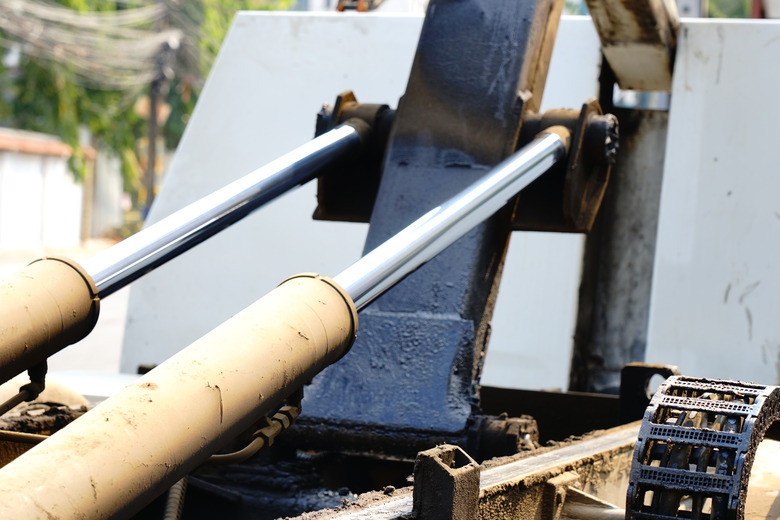How Does A Pneumatic Cylinder Work?
Pneumatic Basics
Pneumatic Basics
A pneumatic cylinder uses the pressure of a gas to perform work, specifically linear work. The word "pneumatic" comes from the Greek and refers to air, which is the least expensive and most common type of gas used in pneumatic cylinders. Air can be easily taken in and compressed to refill pneumatic systems, and does not pose the same danger as other gases. Some inert gases may be used instead, but these must be ordered or manufactured pre-compressed in tanks and have more limited uses.
Types of Cylinders
Types of Cylinders
The cylinder itself contains a chamber for the compressed air to enter, a path for it to leave, a piston which does most of the work involved, and some type of action system which the piston is a part of. There are several different types of action systems for pneumatic cylinders, and each provides a slightly different kind of force. The first and most simple version is the single-acting cylinder, where a piston-oriented system forces compressed air through a solenoid valve into the back of the piston. This highly-compressed air seeks the easiest way to exit, and exerts a large amount of force on the piston face. The surface area of the piston face, or the bore size, directly affects how easily the air will manage to push the piston. The larger the bore size, the more easily the air will move it–until weight itself becomes a significant factor. As the piston is pushed out, the air exits through escape valves that are carefully position further down the cylinder. The piston falls back naturally in place until another burst of compressed air is fired into the cylinder.
The single-acting cylinder can also be modified with a compressed spring mechanism, inserted between the end of the cylinder and the side of the piston opposite where the compressed air enters. This system works in a similar fashion to the standard, but after the compressed air is released, the piston is forced back down to its original position at the end of the cylinder by the spring. This system is used for repeated, linear motion involving heavy loads, and requires a greater force of compressed air to complete its task.
Double-Acting Systems
Double-Acting Systems
As the International Fluid Power Society explains, other cylinder systems are double-acting, or systems that use valves to inject two different streams of compressed air, alternating on either side of the piston. One burst of compressed air pushes the piston out, and another burst pushes it back it to the starting position. More compressed air is needed in this system, and like the others the pressure of the air used needs to be carefully controlled.
References
Cite This Article
MLA
Lacoma, Tyler. "How Does A Pneumatic Cylinder Work?" sciencing.com, https://www.sciencing.com/pneumatic-cylinder-work-5575225/. 27 October 2009.
APA
Lacoma, Tyler. (2009, October 27). How Does A Pneumatic Cylinder Work?. sciencing.com. Retrieved from https://www.sciencing.com/pneumatic-cylinder-work-5575225/
Chicago
Lacoma, Tyler. How Does A Pneumatic Cylinder Work? last modified March 24, 2022. https://www.sciencing.com/pneumatic-cylinder-work-5575225/
